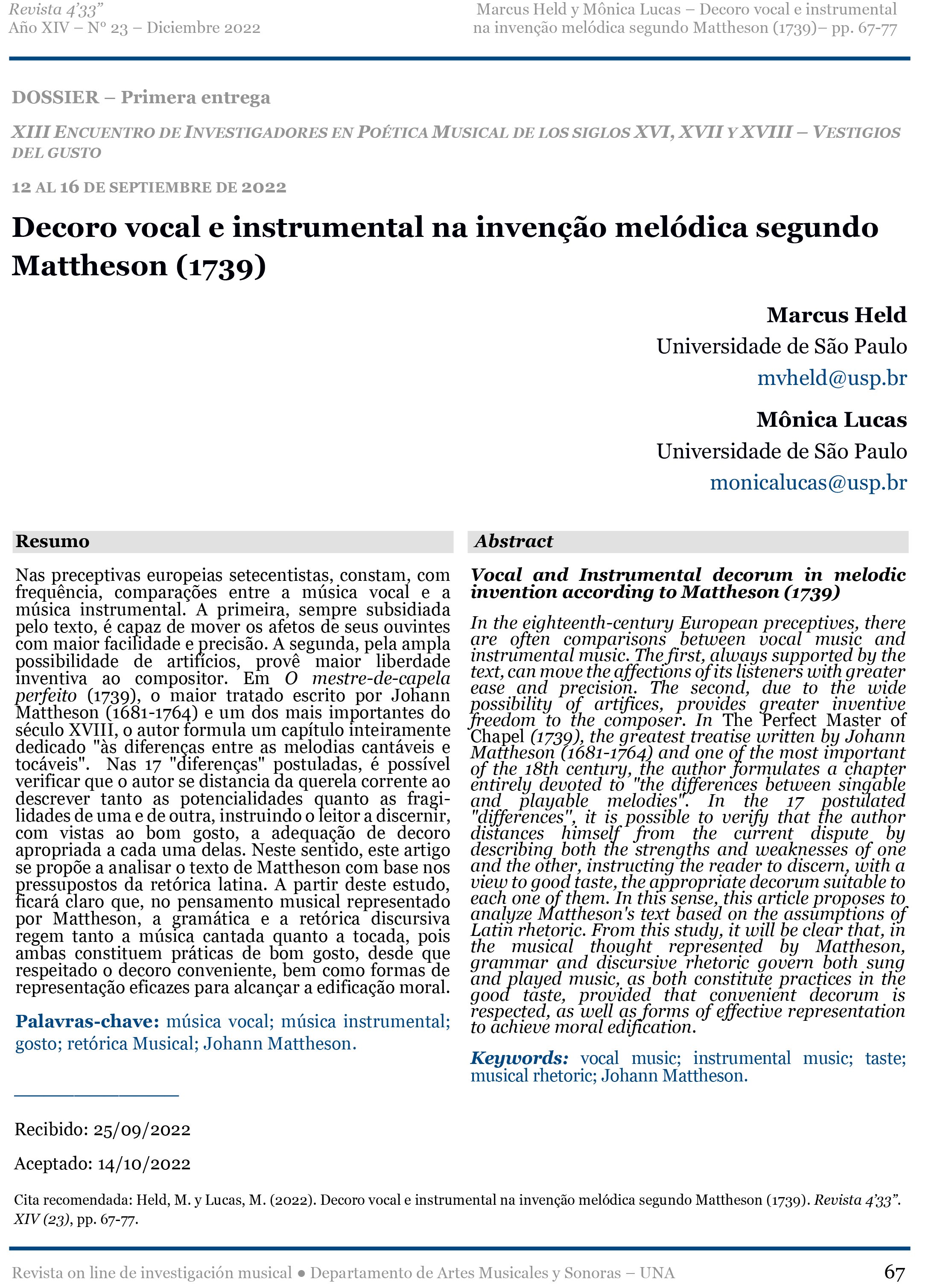Decoro vocal e instrumental na invenção melódica segundo Mattheson (1739)
Palabras clave:
música vocal, música instrumental, gosto, retórica musical, Johann Mattheson, vocal music, instrumental music, music, taste, musical rhetoricResumen
Resumo
Nas preceptivas europeias setecentistas, constam, com frequência, comparações entre a música vocal e a música instrumental. A primeira, sempre subsidiada pelo texto, é capaz de mover os afetos de seus ouvintes com maior facilidade e precisão. A segunda, pela ampla possibilidade de artifícios, provê maior liberdade inventiva ao compositor. Em O mestre-de-capela perfeito (1739), o maior tratado escrito por Johann Mattheson (1681-1764) e um dos mais importantes do século XVIII, o autor formula um capítulo inteiramente dedicado "às diferenças entre as melodias cantáveis e tocáveis". Nas 17 "diferenças" postuladas, é possível verificar que o autor se distancia da querela corrente ao descrever tanto as potencialidades quanto as fragi-lidades de uma e de outra, instruindo o leitor a discernir, com vistas ao bom gosto, a adequação de decoro apropriada a cada uma delas. Neste sentido, este artigo se propõe a analisar o texto de Mattheson com base nos pressupostos da retórica latina. A partir deste estudo, ficará claro que, no pensamento musical representado por Mattheson, a gramática e a retórica discursiva regem tanto a música cantada quanto a tocada, pois ambas constituem práticas de bom gosto, desde que respeitado o decoro conveniente, bem como formas de representação eficazes para alcançar a edificação moral.
Abstract
Vocal and Instrumental decorum in melodic invention according to Mattheson (1739)
In the eighteenth-century European preceptives, there are often comparisons between vocal music and instrumental music. The first, always supported by the text, can move the affections of its listeners with greater ease and precision. The second, due to the wide possibility of artifices, provides greater inventive freedom to the composer. In The Perfect Master of Chapel (1739), the greatest treatise written by Johann Mattheson (1681-1764) and one of the most important of the 18th century, the author formulates a chapter entirely devoted to "the differences between singable and playable melodies". In the 17 postulated "differences'', it is possible to verify that the author distances himself from the current dispute by describing both the strengths and weaknesses of one and the other, instructing the reader to discern, with a view to good taste, the appropriate decorum suitable to each one of them. In this sense, this article proposes to analyze Mattheson's text based on the assumptions of Latin rhetoric. From this study, it will be clear that, in the musical thought represented by Mattheson, grammar and discursive rhetoric govern both sung and played music, as both constitute practices in the good taste, provided that convenient decorum is respected, as well as forms of effective representation to achieve moral edification.


